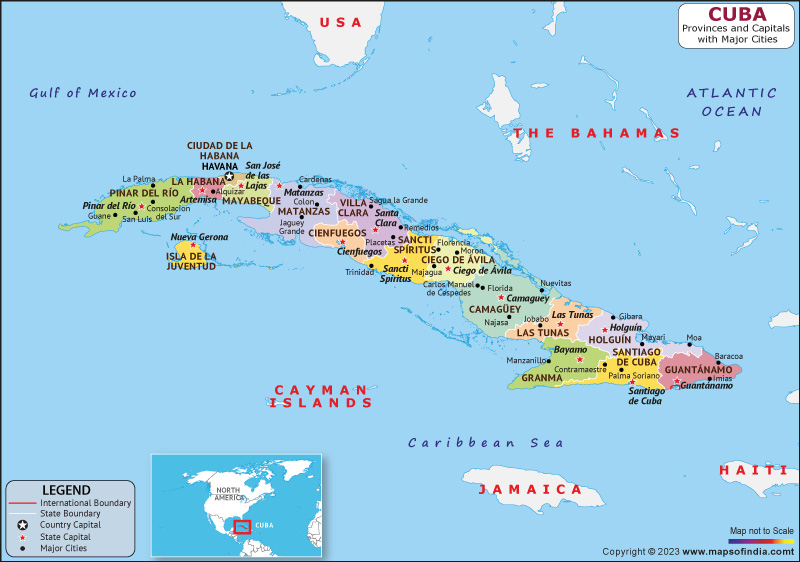Cuba is an island nation situated in the Caribbean region, just east of Mexico and south of Florida. It has a rich and complex history, marked by Spanish colonization, a successful revolution, and ongoing political tensions with the United States. Cuba has a vibrant and diverse culture, known for its music, dance, and cuisine, as well as its visual arts and literature.
History:
Cuba was originally inhabited by indigenous peoples such as the Taino and the Ciboney. However, in 1492, Christopher Columbus arrived on the island and claimed it for Spain. Cuba remained a Spanish colony for over 400 years, with Havana becoming an important port city for trade and commerce in the Caribbean. In the late 19th century, Cuban rebels led a successful war of independence against Spain, and Cuba became an independent nation in 1902.
Cuba’s history in the 20th century was marked by political upheaval and economic challenges. In 1959, Fidel Castro led a communist revolution that overthrew the Cuban government and established a socialist state. This led to tensions with the United States, which imposed a trade embargo on Cuba that lasted for over 60 years. In recent years, Cuba has undergone some economic reforms and opened up to tourism, but it remains a one-party state with limited political freedoms.
Culture:
Cuba has a rich and diverse culture that reflects its African, European, and indigenous roots. Music and dance are a central part of Cuban culture, with styles like salsa, rumba, and mambo gaining international popularity. Cuban cuisine is also known for its unique blend of flavors and influences, with dishes like ropa vieja, black beans, and rice, and Cuban sandwiches becoming popular worldwide.
Language:
The main language of Cuba is Spanish, which is spoken by almost all of the population. However, the Cuban dialect of Spanish has some unique features and is heavily influenced by African and indigenous languages.
Geography:
Cuba is the largest island in the Caribbean, located just south of Florida and east of Mexico. It has a tropical climate, with a rainy season from May to October and a dry season from November to April. The island is home to a variety of ecosystems, including rainforests, coral reefs, and wetlands.
| Official Name | Republic of Cuba |
| Capital | Havana |
| Population | 11,008,112 |
| Area | 109, 884 km2 |
| Currency | Cuban Peso |
| Religion | Christianity |
| Language | Spanish |
| Major Cities | Santiago de Cuba, Santa Clara, Las Tunas |
FAQs
Q1: What is the current political system in Cuba?
Cuba is a one-party socialist state, with the Communist Party of Cuba (PCC) as the only legal political party.
Q2: How has the United States' trade embargo affected Cuba?
The United States has maintained a trade embargo on Cuba since 1960, which has severely limited Cuba's ability to trade with other countries and has had a significant impact on the country's economy.
Q3: What is the healthcare system like in Cuba?
Cuba has a universal healthcare system, which is considered to be one of the best in the world.
Q4: What is the tourism industry like in Cuba?
Tourism is a significant part of Cuba's economy, with popular destinations including Havana, Varadero, and the beaches of Cayo Coco.
Last Updated on: March 21, 2023
